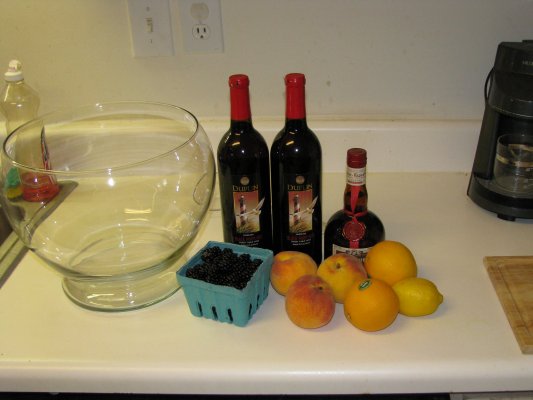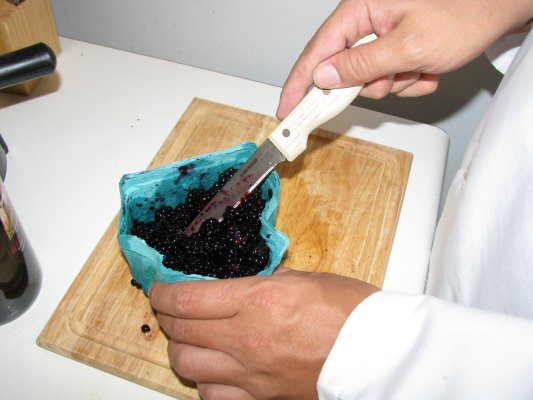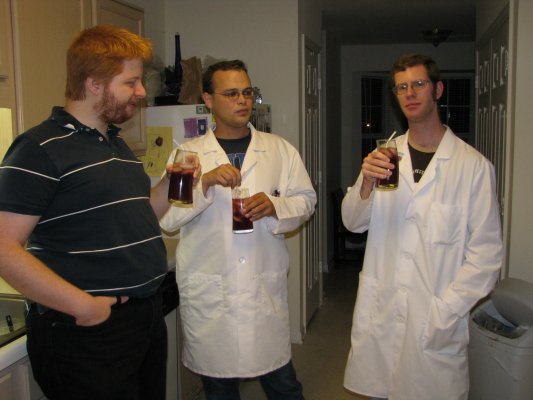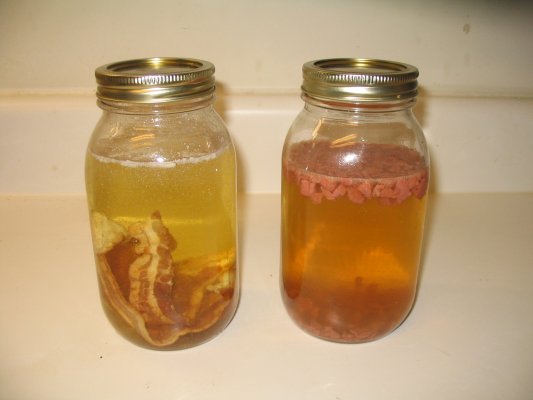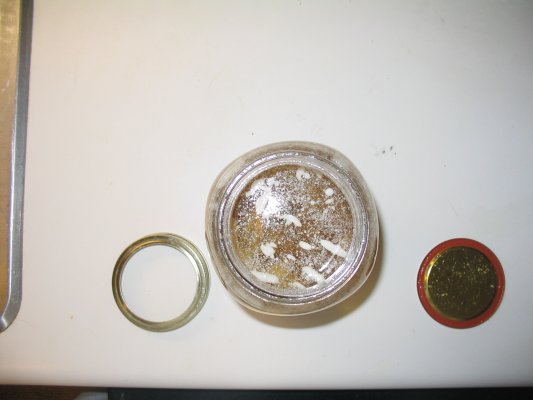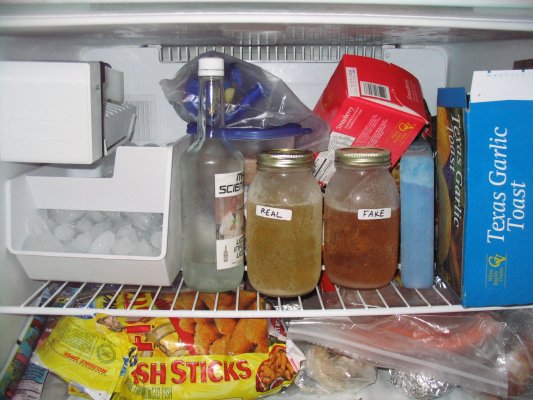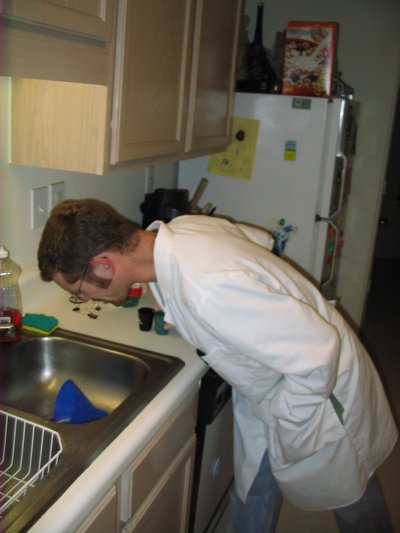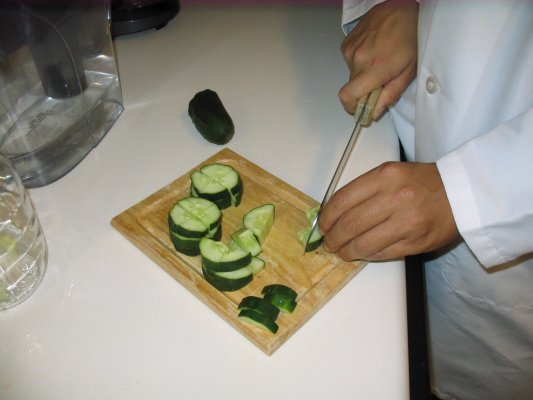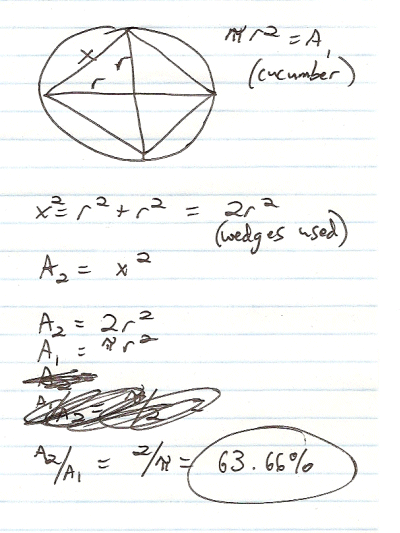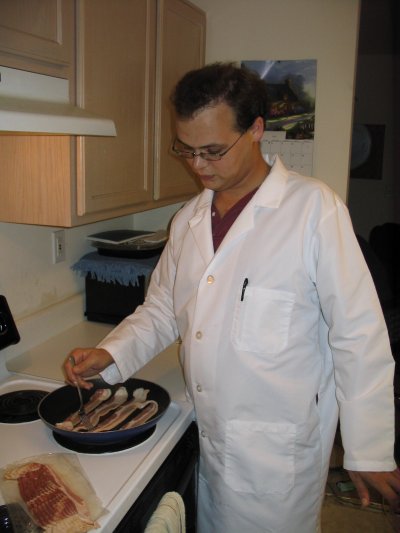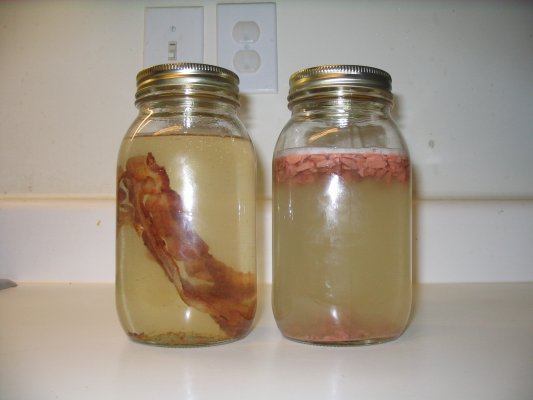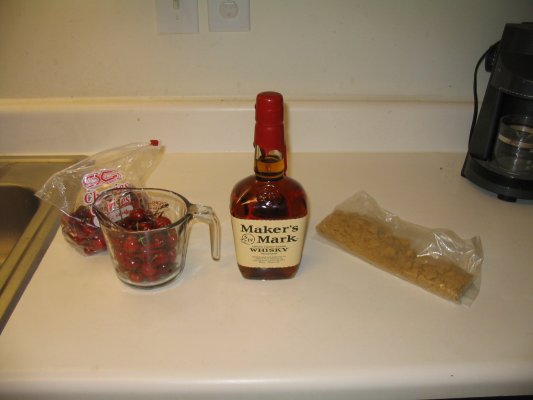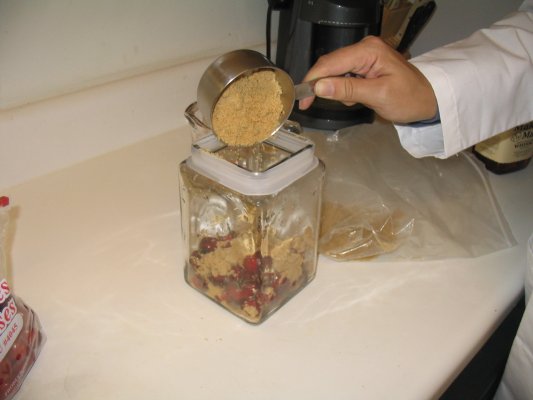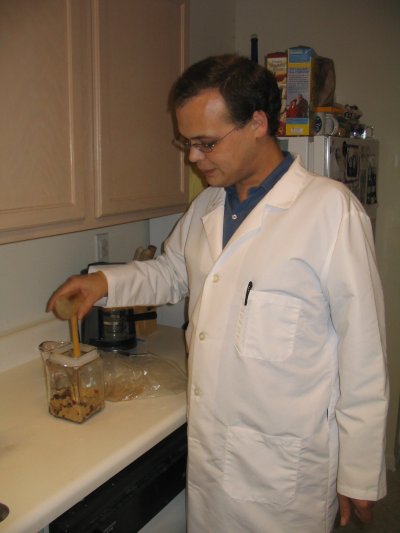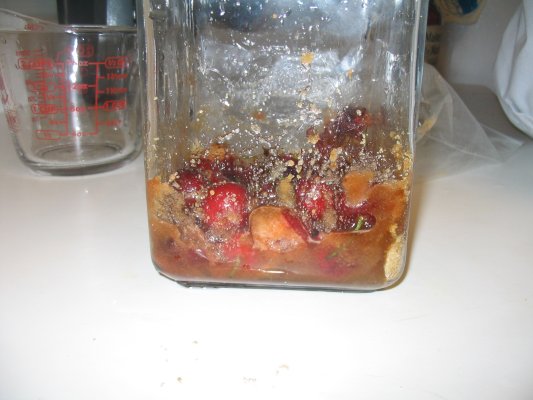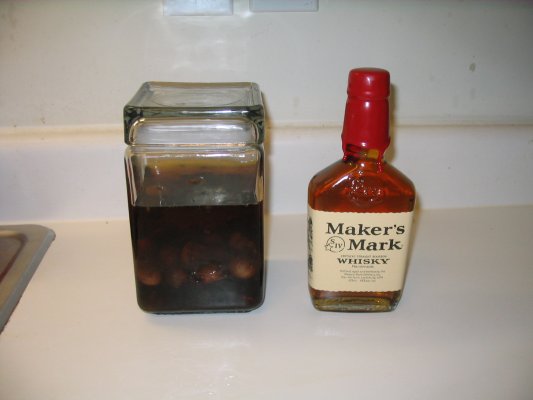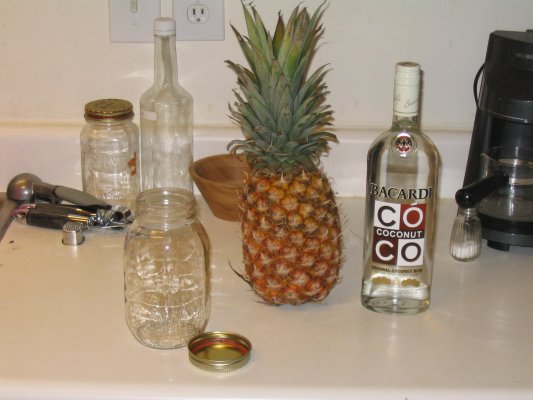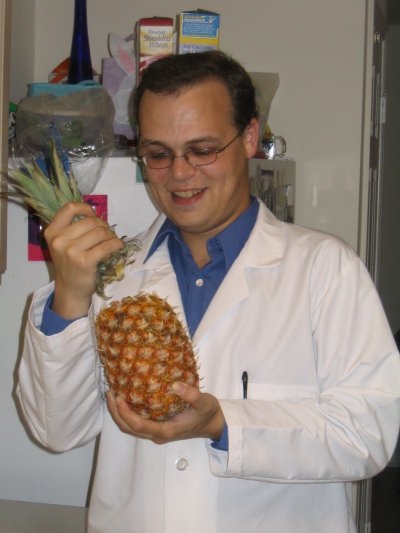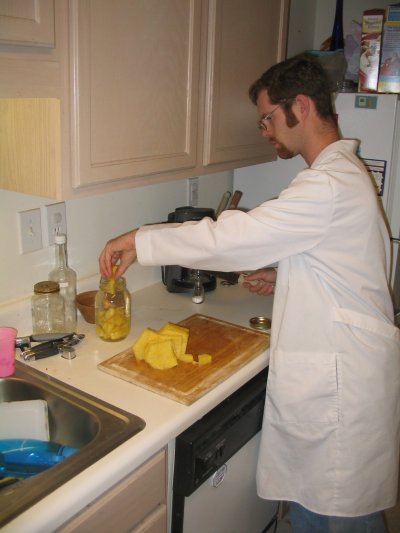
 The Big Easy.
The Big Easy.
Crescent City.
The Birthplace of Jazz.
Paris of the South.
NOLA.
New Orleans is a city of many names, many cultures, and unique cooking. A place where folks flock to to celebrate Mardi Gras, a huge party well renown for drinking.
Unlike many of our fellow drink bloggers, we scienticians didn't make it to Tales of the Cocktail. So in order to participate in this month's Mixology Monday, we had to bring the tastes of New Orleans to our own humble lab. I scoured the net for something that felt sufficiently New Orleansy. Finally, I decided on the Creole, with a recipe found on Drink of the Week.
For those who didn't follow the link, the directions are as follows:
Creole
2.0 oz. Meyers's Platinum White Rum
1.0 oz. lemon juice
0.5 oz. Beef Bouillon
dash of Tabasco sauce
dash of Worcestershire sauce
dash of salt
dash of black pepper
lemon slice
In a shaker filled with ice, add the rum, beef bouillon, Tabasco, Worcestershire, lemon juice, salt and pepper and shake well. Strain into a highball glass filled with ice and garnish with the slice of lemon.
When looking at this recipe, the beef bouillon made us a bit wary, but we decided to press on in the name of science. However, we decided we ought to add our own twist as well, so after making a recipe to spec and then we would make it substituting the bouillon for our new bacon infused vodka.
So, onward to the original Creole.

My impressions: "I'm impressed, this came out nowhere near as bad as I feared. But my, how it burns; though, what else would you expect with a name like Creole. I'm still sweating as I write these notes. Now, onto the taste, it's very citrus-y, the burn doesn't seem to creep up on you until after you have finished your sip. But it leaves your lips tingling and, for me a self-professed capsaicin freak, a bit of a burning of the stomach lining."
Brendan's impressions: "This was definitely an odd taste sensation. It had a spiciness that was quite nice, but the flavor juxtaposition of citrus, Worcestershire and rum was very unsettling. Tasting this drink is like noticing a glitch in the Matrix: you can't quite put your finger on it, but you know something is not right in the world. It's not bad, exactly; just unpleasant."
Brendan's rating: 1.5 flasks out of 5
Wayland's rating: 2.5 flasks out of 5
Overall rating: 
Creole: Now with Bacon!2.0 oz. Meyers's Platinum White Rum
1.0 oz. lemon juice
0.5 oz. Mad Scientician™
Bacon Infused Vodkadash of Tabasco sauce
dash of Worcestershire sauce
dash of salt
dash of black pepper
lemon slice
This was prepared the same way as the regular Creole.
My impressions: "I didn't really notice a difference here. I don't know how it would be without the beef or bacon, but in this drink, there doesn't seem to be much difference. This one only seems to burn a little less, but I don't know whether to attribute that to the change of meat or to the varying measurements of a 'dash.'"
Brendan's impressions: "I now know that when I tasted the original Creole, I had only begun to feel as if I couldn't put my finger on something. In terms of flavor, I couldn't tell you precisely what the difference is. In both the beef and bacon varieties, these flavors are fairly well masked by the other flavors. But there was something beneath the surface that made this drink more unpleasant than the first."
Brendan's rating: 1.0 flasks out of 5
Wayland's rating: 2.5 flasks out of 5
Overall rating:

After both these varieties, we couldn't write a post about New Orleans without actually finishing a drink. So we moved on from the Creole to the Hurricane.
I guess I should be a good bartender and share some trivia about Hurricanes:
Of course, the closest Major League sports team to my home is the Carolina Hurricanes.
I myself have slept through a hurricane, Hurricane Fran; I awoke the next morning, wondering why my music wasn't playing. Apparently, my entire family spent the whole night awake in the living room scared. We were lucky, though; the only thing we lost was power for a week.
During another hurricane that came through the area, as a restaurant bartender, I walked in the door and asked my manager what our drink special of the day was. He said, "How about we run $2.00 Hurricanes?" Less than an hour later, the power went out and I hadn't sold one.
Finally, the day Hurricane Katrina hit, my manager at a different restaurant had the audacity to run Tilapia Pontchartrain. For those that don't know, Lake Pontchartrain was the lake that flooded into New Orleans.
Which brings us full circle back to New Orleans, so after much searching, we decided to use this recipe to make Hurricanes:
2.0 oz. Meyers's Platinum White rum
2.0 oz. Goslings Black Seal rum
2.0 oz. passion fruit juice
1.0 oz. orange juice
0.5 oz. lime juice
0.5 oz. simple syrup
0.5 oz. grenadine

Now, in my early bartender days, I was thrown behind a bar and told, "You're a bartender now!" Some of the drinks I would look up, but anything fruity like a Hurricane or a Mai Tai, I'd throw some juices together with some rum to create something tasty and sweet, and no one really noticed. I've come a long way since those days, but in my searches to make hurricanes, I noticed there were 50 billion variations on this "common drink."
But when making this recipe, this is what I noticed. This is nowhere near as sweet as I expected. In my old days, they come out sweet and fruity and the guest was happy. This is a lot more tart than I would expect, but I'm not finding that to be a bad thing. The tartness in contrast to the sweet of the rum, truly brings out the rums' flavors. I'm kinda curious how this would have turned out with a spiced rum also.
Anyway, by the time we had a hurricane for each of us, it was well into the early hours of the morning, and Brendan and myself, in "Big Easy" fashion, spent the rest of the evening on the back porch of the laboratory, sipping our hurricanes and talking, until I finally stumbled off to sleep.
Brendan's rating: 3.5 flasks out of 5
Wayland's rating: 3.5 flasks out of 5
Overall rating:









